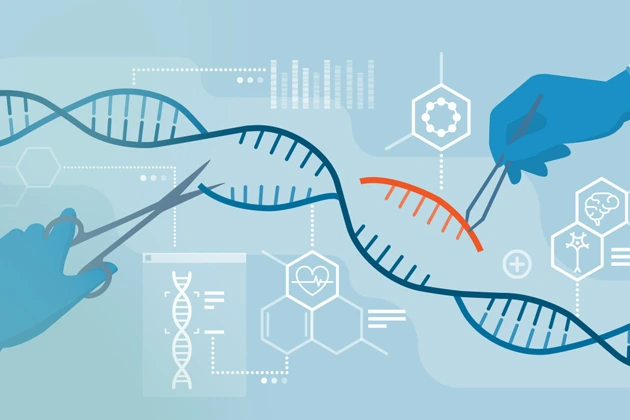CRISPR gene editing technology can help sickle patients fight their genetic condition quite effectively. With this gene therapy, stem cells are modified to prevent the red blood cells from becoming sickled. Let’s see how this works and helps combat sickle cell disease.
Knowing Sickle Cell Disease
An inherited blood disorder that hardens red blood cells, shaping them like a C-shaped farm tool called a sickle. In this genetic disorder, hemoglobin gets highly affected. The normal shape of red blood cells is flexible and disc-shaped, helping the cells easily flow through the blood vessels. However, under the effect of this disease, this shape gets distorted and takes the shape of a sickle as a result of gene mutation. These sickle-shaped red blood cells lose their flexibility and block the blood flow to the rest of the body.
Consequently, sudden and strong pain can occur due to the blocked flow of blood, requiring medical attention. These pain episodes are termed as ‘vaso-occlusive crisis’ and ‘sickle cell crisis.’ Apart from severe pain, this disease can cause several other complications, such as eye problems, lung problems, kidney disease, stroke, and infections.
Unveiling CRISPR Gene Editing
CRISPR or Clustered Regularly Interspaced Short Palindromic Repeats gene editing is a gene alteration technique that allows the modification of DNA. Based on the bacterial CRISPR-Cas9 antiviral system, this gene editing technology works in two steps to help alter the DNA. Let us have a look at how this gene editing takes place-
Step 1: DNA Cutting
The Cas9 enzyme present in the antiviral defense system acts like molecular scissors that cut DNA of a particular location. This genome editing system is used by bacteria as an immune defense. This defense system creates small pieces of RNA in sequence and attaches to DNA and Cas9 enzymes as well. While introduced to the cells, this RNA identifies the targeted DNA sequence, and Cas9 cuts the DNA at the targeted location. Apart from Cas9 enzyme other enzymes can also be used to execute this process.
Step 2: DNA Repairing
Following DNA cutting, scientists or researchers utilize the cell’s very own DNA repair mechanism to add or delete pieces of the gene. They also use this mechanism to make changes to the DNA by replacing an existing segment with a customized DNA sequence.
CRISPR Gene Editing in Sickle Cell disease
The CRISPR gene editing technique is used in two ways to treat sickle cell disease. One is restoring adult hemoglobin, and the other is promoting fetal hemoglobin production.
Restoring Adult Hemoglobin
This genetically mutated medical condition perfectly fits the application of the CRISPR gene editing technique. With an ex vivo procedure, CRISPR can be used to treat sickle disease. CRISPR gene editing in sickle disease holds great potential. Through this gene editing procedure, the hematopoietic stem cells are drawn from the patients to cut and replace them. Through this method, the responsible hemoglobin gene is repaired to help produce a healthy and normal form of hemoglobin.
This approach was first introduced by a researcher of Matthew Porteus’ lab at Stanford University, Daniel Dever. The broken site is then used to correct a gene through homology-directed repair, knocking in the affected gene. A normal gene sequence of the donor is introduced to the cell for repair. After this process, the new and edited cells are enabled to produce normal hemoglobin, which is then re-implanted into the patient’s blood flow.
Promoting Fetal Hemoglobin Production
In this approach, CRISPR sickle gene editing involves switching off the gene that suppresses fetal hemoglobin. Through this process, fetal hemoglobin is replaced with mutated adult hemoglobin, helping prevent this disease from affecting individuals prone to this genetic disorder.
This promising gene editing therapy for sickle cell is now being widely used by scientists to help sickle patients combat the disease with absolute effectiveness. Apart from these two methods, other CRISPR trials are also used to treat sickle cell disease, making it a breakthrough technology in the gene editing field.










